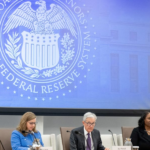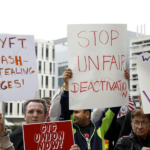A new class of young graduates is getting ready to enter the workforce this summer, but they’re likely to face a chilly reception.
A few different factors are likely contributing to such a tough job market for young people right now. Experts tell Fortune that a combination of factors including a cooling labor market, a hiring pullback prompted by shifting tariff policies, and the long-promised of integration of AI into the workforce, are all creating massive problems for a new generation of job seekers.
“There are now clear trends in the data, not just vague whisperings, that more and more people are getting left behind,” says Cory Stahle, an economist at hiring platform Indeed’s Hiring Lab.
The COVID pandemic kicked off a major workforce reshuffling, unofficially dubbed the “Great Resignation,” during which workers were successfully able to switch jobs for higher wages.
That lack of turnover means that there are fewer opportunities for entry level workers to nab a role. “We’re seeing the labor market’s version of the housing market’s ‘lock-in’ effect, where employees are too nervous to make moves,” says Fisher. “This freeze is blocking normal opportunity flow, so early career workers can’t break in, experienced workers can’t move up, and burned-out employees are staying put.”
Trump’s tariff policy changes, and their subsequent impact on the economy, is also creating problems for entry-level workers in the labor market.
With an uncertain economic outlook thanks to on-again-off-again levies for major U.S. trading partners, many companies have pulled back on hiring until they get further clarity on what kind of economy will take shape in 2025.
“Business leaders are uncertain and when that happens they don’t do as much hiring because they don’t know what the next week is going to look like, let alone the next month,” says Allison Shrivastava, a labor economist also at Indeed’s Hiring Lab. “They’re going to wait, especially for those jobs in what we think of as, traditionally, white collar sectors, which are often difficult and costly to hire for.”
The promise of AI has been a looming threat to human workers for years, but there are now signs that companies are using the new tech to take over work previously done by entry-level employees.
“We concluded that a high adoption rate by information companies along with the sheer employment declines in these roles since 2022 suggested some displacement effect from AI,” the report reads.
Companies are under pressure from investors to show that they can do more with less because of AI, says Sam Kuhn, an economist at Appcast, a job advertising company. Cutting jobs, or freezing hiring, are ways to do that. “We are starting to see the ripple effects of companies that have invested a lot of money into artificial intelligence, wanting to show that they’re actually getting something out of it,” he says.
New job seekers can comfort themselves with the knowledge that it’s not just their imagination—the hiring landscape really is tougher for them than it was a few years ago.
That means they need to be more resourceful than their predecessors when it comes to outsmarting the labor market. That might include things like pivoting their job search to consider other industries or roles outside of what they studied in school. They also need to work harder to show employers that the skills they learned in college are a perfect fit for a given role.
“In the current labor market, new graduates need to find additional signals of skill beyond just a degree,” says Fisher. “From certificates to demonstrated soft skills like communication, the candidates who stand out show they’re already bridging the gap between school and skills acquisition.”
There remains, however, a reason for young people to hold out hope. Labor market trends are cyclical, and there are still opportunities out there for young people who want them, notes Rakas—even if they’re not ideal.
“We’re coaching them to think about not just plan A, but also plan B, C and D,” he says.
“To be pragmatic, and also to pivot.”









